
Chord Native N4BB Bubinga electro-acoustic guitar
Manchester-based Chord extend their popular Native range of electro-acoustic guitars with a touch of the exotic, at an affordable price
 he more mature guitar wielders out there will no doubt recall the rather blunt entry-level instruments on offer when cutting their musical teeth (and probably fingers) on the high-actioned, untunable and virtually unplayable guitars of days gone by. But for the young players of today it’s an altogether different story. Modern manufacturing techniques and far eastern mass production has raised the bar on an entry-level guitar to an incredible level. It is no surprise therefore, when lifting the Chord out of its box for the first time, to be immediately struck by what a great look and feel it has.
he more mature guitar wielders out there will no doubt recall the rather blunt entry-level instruments on offer when cutting their musical teeth (and probably fingers) on the high-actioned, untunable and virtually unplayable guitars of days gone by. But for the young players of today it’s an altogether different story. Modern manufacturing techniques and far eastern mass production has raised the bar on an entry-level guitar to an incredible level. It is no surprise therefore, when lifting the Chord out of its box for the first time, to be immediately struck by what a great look and feel it has.
This guitar is part of the Native electro-acoustics range, with mini-jumbo styling, single cutaway and an active four-band EQ. The original four models in this range have been joined by five new ones, each with bodies made from exotic woods native to specific forest regions of the world, with a mahogany neck and rosewood fingerboard finished with a clear, high-gloss lacquer. The model reviewed is the Native Bubinga incarnation. Other woods in the range are Zebrano (no, me neither), Flame Maple, Spalted Maple, Piebald Ash, Pearwood, Rosewood, Curly Ash and Sapele. The Native series are only available in right-handed models but there are lefties available in the slightly cheaper CMJ4CE series that come with laminated spruce tops and basswood back and sides and the same neck, hardware and preamp.
Picking this guitar up to play before plugging in, the neck is comfortable in the hand without being too chunky and, even high up the neck it is easy to fret and (on this guitar at least) has no nasty surprises with intonation when using the cutaway and venturing beyond the 12th fret. Back in the safer territory nearer the polymer nut, wide open chords have a transparency that enables you pick out each note, although heavy strumming may get a little harsh on the ear and let the odd bit of fret-buzz into the blend. With softer fingerpicking the sparkle from the strings is met by some pleasing warmth coming from the sound hole and the mini-jumbo body gives out a good bit of volume and punch without having to pick too hard. It may lack the depth of some more expensive instruments made from unlaminated tone woods, but the Chord certainly has a clarity and zing that will cut through a noisy mix.

Control panel of the Chord Native Bubinga showing volume, EQ, presence, battery test button and battery compartment
The active preamp come with the usual controls: volume, bass/mid/treble and presence. There is also a battery test button. Plugging into an AER amplifier with everything on the guitar and amp set to the central position, the initial sound is very satisfying. There is quite a wide range of cut and boost on the EQs, so small adjustments on the sliders produce the best variety of sounds. I found that leaving the EQ pretty flat and using just the volume and presence gave the most pleasing range of usable tones when playing solo but I’m sure more flexible EQ-ing would be needed when playing with a band. There’s no getting away from the piezo sound, but love it or hate it, it is still the best way of amplifying an acoustic, especially at this price level. I would leave the piezo/magnetic/microphone blending preamps to those with deeper pockets.
Perhaps for an electro-acoustic guitar that seems aimed squarely at the budding young singer-songwriter aspiring to get out there on the live circuit, the simple omission of strap buttons seems a little odd and means taking a drill to your nice new instrument if you want to wear it around your neck. An onboard tuner would have been nice as well but at this price that may be being a little picky. Where you can be picky, though, is when it comes to the choice of appearance. With nine distinct woods to choose from, there is bound to be one that hits the right button.
Verdict: A great instrument for any aspiring player, with excellent build quality, range of sounds and playability, and at a price that doesn’t upset the bank manager.





Chris Cleaver
[cc_full_width_col background_color=”f1f1f1″ shadow_color=”cccccc” radius=”6″]Specifications
- Power supply: 9V battery (supplied)
- Controls: 4-band EQ + volume
- Construction: X-braced mini jumbo with venetian cutaway
- Neck: Nato
- Fingerboard: Rosewood, 21-fret
- Scale length: 648mm
- Nut width: 43mm
- Pickup: Under-saddle piezo
- Hardware: Polymer saddle & nut, rosewood bridge
- Tuning machine heads: 3-a-side chrome die-cast
- Dimensions: 375 x 1020 x 120mm
- Weight: 2.03kg
Price
£249.99
Website
chord.avsl.com
[/cc_full_width_col]


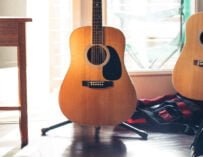
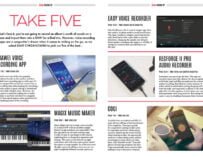
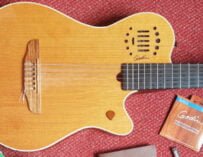
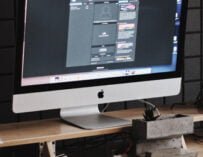




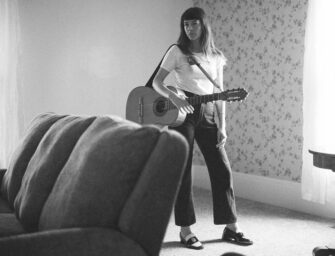























Related Articles